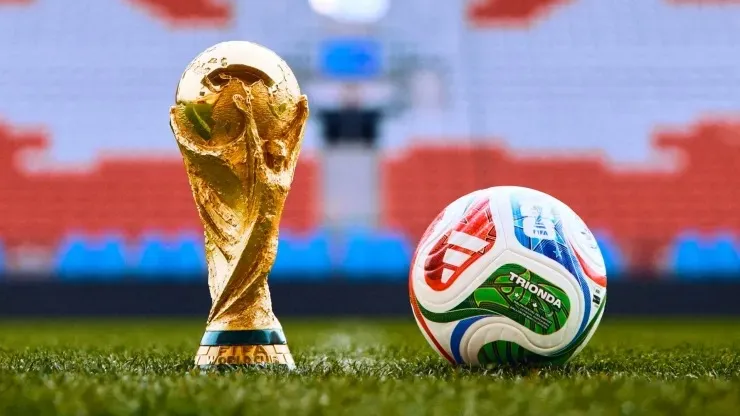

FIFA Unveils Trionda The High-Tech Heart of the 2026 World Cup
FIFA has officially unveiled 'Trionda,' the technologically advanced match ball for the 2026 World Cup, which is as much a symbol of unity as it is a tool for precision officiating. The ball's design pays tribute to the tournament's three host nations—Canada, Mexico, and the United States—while its internal hardware is set to provide match officials with unprecedented levels of data to ensure a fairer game.
A Design Celebrating Three Nations
The name 'Trionda' is derived from the Spanish for "three waves," a direct reference to the historic tri-nation hosting of the event. The ball's aesthetic reinforces this theme, with a vibrant red, green, and blue color scheme that honors the national colors of the hosts.
The design is rich with symbolism. The fluid, four-panel construction is adorned with specific iconography representing each country a maple leaf for Canada, an eagle for Mexico, and a star for the United States. Gold embellishments are woven into the design as a nod to the iconic World Cup trophy, completing a look that is both modern and meaningful.
The 'Heartbeat' Within the Ball
The most groundbreaking feature of the Trionda, however, lies hidden beneath its surface. Continuing the evolution of connected ball technology, the ball contains a sophisticated 500Hz inertial measurement unit (IMU) motion sensor chip, complete with an accelerometer and a gyroscope. An Adidas technician aptly described the technology as giving a "heartbeat to the ball," as it sends a signal 500 times every second to anchor points around the stadium.
This technology is engineered for a single purpose to make the game fairer. The chip is capable of detecting every minute touch, deflection, or spin. This real-time data is fed directly to the Video Assistant Referee (VAR) system, providing an objective and instantaneous source of information for crucial decisions.
Enhancing Officiating with Precision Data
The practical applications of this technology are game-changing, particularly for two of football's most contentious calls offsides and handballs. For offside decisions, the sensor provides the precise "kick point" of a pass with an accuracy that is impossible to achieve by reviewing television footage alone. This data, combined with player tracking technology, allows for faster and more accurate rulings.
Similarly, in crowded penalty areas where a referee's view may be obstructed, the chip can confirm if the ball made contact with a player's hand or arm, removing ambiguity from critical penalty decisions. To ensure this internal hardware doesn't affect the ball's flight or balance, the chip is ingeniously mounted in one of the four panels, with counter-balances placed in the other three, a significant evolution from previous designs.